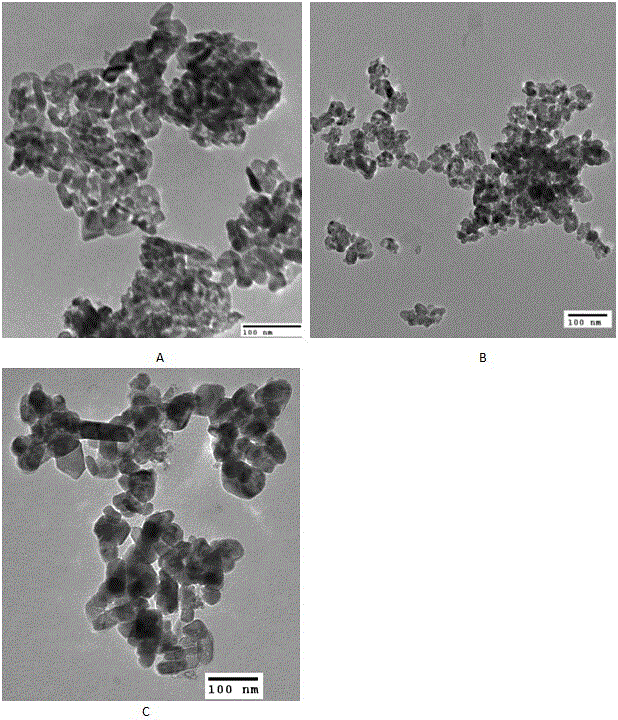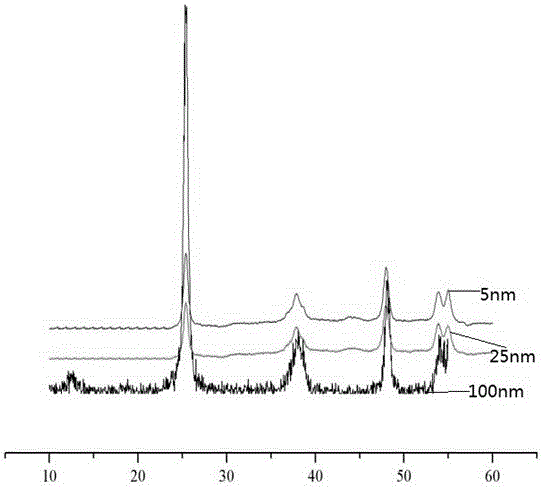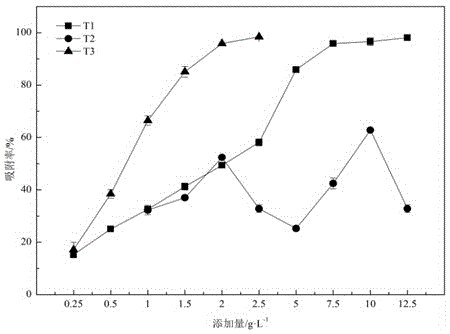Method of utilizing nano titanium dioxide to remove mercury ions in wastewater
A technology of nano-titanium dioxide and mercury ions, applied in chemical instruments and methods, other chemical processes, water/sewage treatment, etc., can solve problems such as difficult to meet discharge standards, secondary pollution, high operating costs and raw material costs, and achieve non-existent Secondary pollution, low cost, and the effect of solving relatively high operating costs and raw material costs
- Summary
- Abstract
- Description
- Claims
- Application Information
AI Technical Summary
Problems solved by technology
Method used
Image
Examples
Embodiment Construction
[0029] The present invention will be described in further detail below in conjunction with specific embodiments.
[0030] 3 kinds of anatase phase TiO 2 Powder: the average particle size is 5nm, 25nm and 100nm, respectively, and the purity is greater than 99.8%. The first two particles are purchased from Hangzhou Wanjing New Nano Technology Co., Ltd., and the last particle is purchased from Aladdin Reagent Company. The morphology was characterized by transmission electron microscopy (TEM), and the results were as follows: figure 1 -As shown in A, B, and C, X-ray diffraction (XRD) analysis of the crystal form of the three particles shows the results as follows figure 2 shown.
[0031] Prepare simulated mercury-containing wastewater according to GB / T602-2002 "Preparation of Standard Solutions for Determination of Impurities in Chemical Reagents": Weigh 1.35g of mercuric chloride, dissolve it in water, transfer it into a 1000mL volumetric flask, and dilute to the mark. Other ...
PUM
| Property | Measurement | Unit |
|---|---|---|
| particle diameter | aaaaa | aaaaa |
| particle diameter | aaaaa | aaaaa |
| particle diameter | aaaaa | aaaaa |
Abstract
Description
Claims
Application Information
 Login to View More
Login to View More - R&D
- Intellectual Property
- Life Sciences
- Materials
- Tech Scout
- Unparalleled Data Quality
- Higher Quality Content
- 60% Fewer Hallucinations
Browse by: Latest US Patents, China's latest patents, Technical Efficacy Thesaurus, Application Domain, Technology Topic, Popular Technical Reports.
© 2025 PatSnap. All rights reserved.Legal|Privacy policy|Modern Slavery Act Transparency Statement|Sitemap|About US| Contact US: help@patsnap.com



